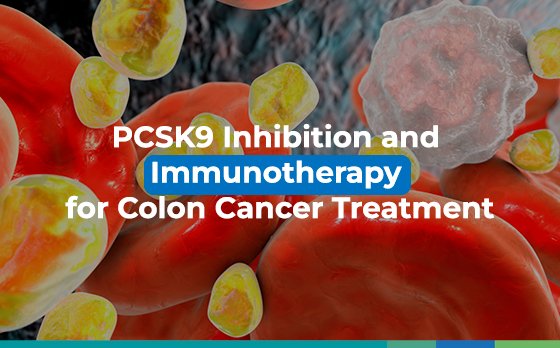Colorectal cancer is one of the leading causes of cancer-related death worldwide. Although immune checkpoint inhibitors, such as anti-PD-1 therapies, have shown promising results in other cancer types, their efficacy in colorectal cancer has been limited due to tumor resistance. In this context, the tumor microenvironment, which includes immune cells, metabolic factors, and proteins, plays a key role. A recent study led by Wang and his team at Fudan University, published in Frontiers in Immunology, proposes an innovative solution: combining PCSK9 inhibitors with anti-PD-1 therapies to overcome these barriers.
One of the key proteins in this research is PCSK9, primarily known for its role in lipid metabolism and cholesterol regulation. However, it also influences antigen presentation in tumor cells, affecting the immune system’s ability to identify and attack cancer. The research team used preclinical models of colorectal cancer to explore how PCSK9 inhibition could enhance antitumor immune responses.
To conduct the study, the researchers developed mouse models of colorectal cancer and divided them into groups to receive different treatments: one with PCSK9 inhibitors, another with anti-PD-1 therapies, and a third group with a combination of both treatments. They used advanced techniques, such as immunohistochemistry analysis and flow cytometry, to evaluate immune cell infiltration, tumor metabolic activity, and changes in the tumor microenvironment. This allowed them to measure the impact of each strategy on tumor reduction and immune system reprogramming.
The study revealed that combining PCSK9 inhibitors with anti-PD-1 therapies significantly improved treatment effectiveness. This combination increased the infiltration of cytotoxic T cells (CD8+) into the tumor, which are essential for destroying cancer cells. Additionally, it reduced the presence of regulatory T cells (Tregs), which suppress the immune response and facilitate tumor growth. Another important finding was the reprogramming of the tumor microenvironment by modifying tumor metabolism and reducing factors that promote tumor proliferation.

Figure 1. Study findings of simultaneous PD1 and PCSK9 inhibition in mouse models of colorectal cancer.
The results also showed a significant reduction in tumor size in the models treated with this combination, compared to treatments applied individually. Although this study was conducted in preclinical models, it opens new possibilities for developing more effective therapies against resistant colorectal cancer. This strategy could improve the efficacy of current treatments, reduce side effects, and serve as a basis for combined therapies in other cancer types.
The work led by Wang highlights the importance of understanding and modifying the tumor microenvironment to overcome treatment resistance. While clinical trials in humans will be necessary to confirm these findings, this innovative approach offers new hope for patients and their families facing this challenging disease.
Main Reference:
Wang, R., Liu, H., He, P., An, D., Guo, X., Zhang, X., & Feng, M. (2022). Inhibition of PCSK9 enhances the antitumor effect of PD-1 inhibitor in colorectal cancer by promoting the infiltration of CD8+ T cells and the exclusion of Treg cells. Frontiers in immunology, 13, 947756. https://doi.org/10.3389/fimmu.2022.947756
Other References:
Bray, F., Ferlay, J., Soerjomataram, I., Siegel, R. L., Torre, L. A., & Jemal, A. (2018). Global cancer statistics 2018: GLOBOCAN estimates of incidence and mortality worldwide for 36 cancers in 185 countries. CA: a cancer journal for clinicians, 68(6), 394–424. https://doi.org/10.3322/caac.21492
Lombardi, L., Morelli, F., Cinieri, S., Santini, D., Silvestris, N., Fazio, N., Orlando, L., Tonini, G., Colucci, G., & Maiello, E. (2010). Adjuvant colon cancer chemotherapy: where we are and where we’ll go. Cancer treatment reviews, 36 Suppl 3, S34–S41. https://doi.org/10.1016/S0305-7372(10)70018-9
Carlino, M. S., Larkin, J., & Long, G. V. (2021). Immune checkpoint inhibitors in melanoma. Lancet (London, England), 398(10304), 1002–1014. https://doi.org/10.1016/S0140-6736(21)01206-X


